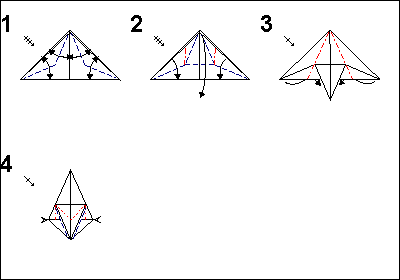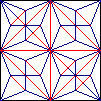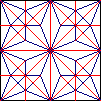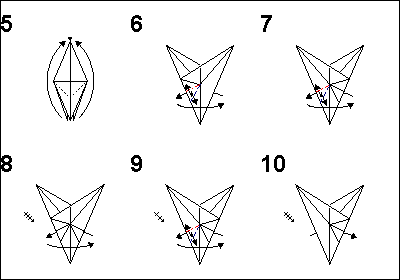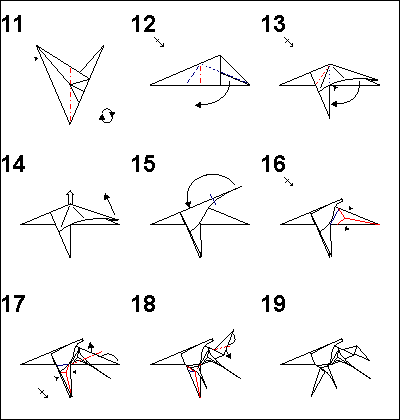|
Copyright © by Vostrikov Alexandre. Let's begin from the blinzed waterbomb base form. On each of four sides we shall mark specified crease, and, then, at the following stage of folding we shall use them. Further, in two stages, we shall finish all of eight pointed elements necessary for folding of the mosquito. Let's note, that at the given stage the model substantially reminds the blinzed frog base. Though we folded it completely in another way. For confirmation, it is possible to compare the patterns of the model, which is folded at present, and the blinzed frog base.
Turn the model inside out. And we shall begin to mark the creases, which are required further. Thus we shall turn over simultaneously the model from the back side. In front we shall mark creases on two sheets. Then we shall pass three sheets, not marking any creases. Let's mark creases for the next two sheets. And, at last, turn over from left to right three pointed elements which is taking place behind. At the left there will be only one pointed element. It is the future wings. Push them inside so that they have got in the opposite pointed element which is taking place at the centre of the right part of the model. In end of actions we shall turn the model. Pet's begin to form the mosquito's feet. For external pointed element is applicable the simple lightning crease. Thus concave at the previous stage wings become more thin in front. Simultaneously we fold downwards the second pair of feet on the marked earlier creases. The internal double lightning crease is applied. To make it, the model it is necessary to slightly open. Nroceed now to formation of the mosquito's sting. We should two times apply for this purpose reverse fold. After sting is generated, you can add a little expressiveness, having folded the top part of sting. Eyes thus are created. ęow we needed only to give the final form to wings and to make feets twice more thin.
Copyright © by Vostrikov Alexandre.
|
